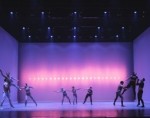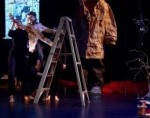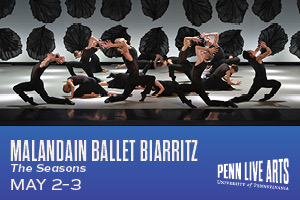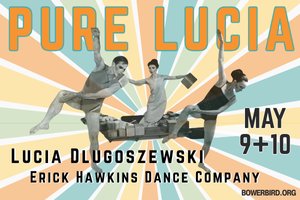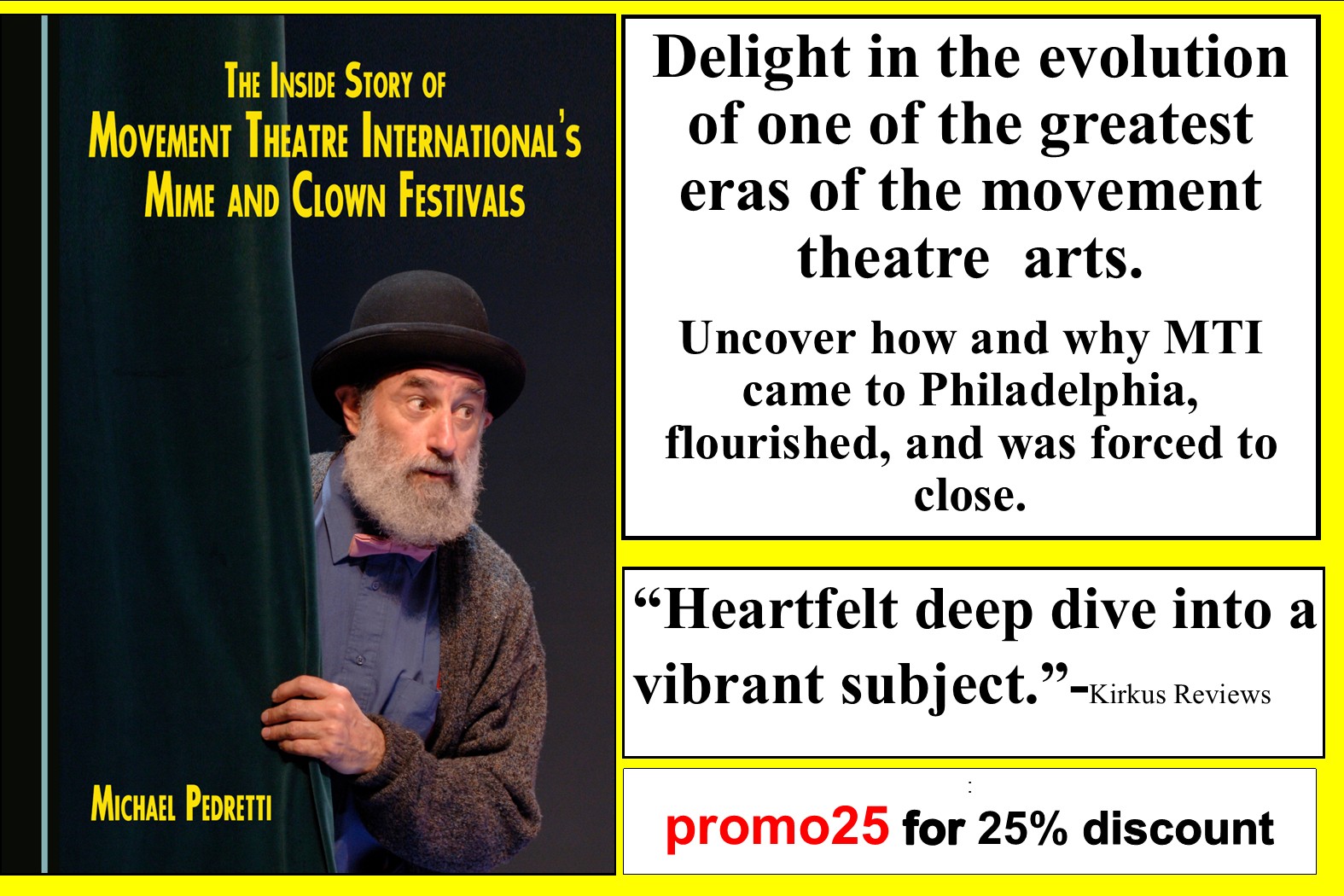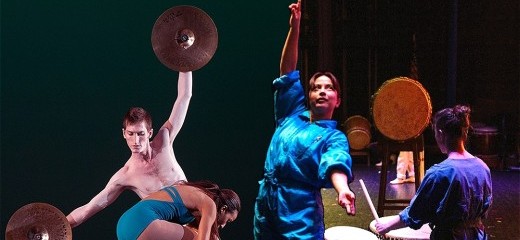
Sound Moves: an interchange of expertise in percussion and modern dance.
by Caitlin Green
I’ve seen Casual Fifth, a Taiko and dance ensemble, several times in the past. Each show, including tonight’s performance of Sound Moves, a program shared with modern dance repertory company Dancefusion, has been both instrumental and kinesthetic. The drummers utilize their full ranges of motion to bring forth the deep, buoyant sounds that the Taiko drums can offer. An arm reaches back into a full extension that opposes the instrument before arcing to strike. Instantly, the loud resonant sound subdues to a whispering pitter-patter as subtle flicks of the wrists gradually settle the wooden sticks into softer taps that dissolve to vibration against the wood or skin of the drum. In Two Shores (arrangement by Yiden Zeng) drummers lunge deep into their hip flexors, demonstrating stamina and flexibility while shifting from side to side to make contact with their floor-level drums. Their movement demonstrates intentional control of their power in relationship to their instrument while honoring both the cadence of the score and the synchrony of polyrhythms between players.
While the instruments seem to inspire a choreography of their own, Casual Fifth also serves several dance numbers without the drums. Choreographed by Jim May and performed to live piano by John Heward, Deer Dance, is particularly eye-catching. The indulgent duet takes time to unfold. Dancers Alex Pfister and Meggi Sweeney Smith crouch together in ball-like resting postures with arms cradling one another. One dancer rests their head on the other’s back, occasionally lifting it only to rotate softly, reposition, and lay back down. When the two eventually change position, their movement counters the ball shape, trading in the condensed crouch for a fully elongated handstand position, one leg extended toward the ceiling in an inverted split. The stark contrast of growing and shrinking accompanies the sense of ease in Pfister’s and Sweeney Smith’s synchronous arrivals at each position and makes the piece feel almost meditative.
Modern dance repertory company Dancefusion brings three works to round out the Sound Moves program. The two ensemble revivals – Gwendolyn Bye’s The Rose (1986) and Daniel Maloney’s Suite for Percussion (1973) – and a solo – Mary Anthony’s The Wind (1947) – all feature original choreography by dancemakers trained in the movement language of Martha Graham, a legacy evident throughout their dances. In The Wind, soloist Kate Lombardi, spotlighted centerstage, breaks silence by reciting e.e. cummings’s poem, “supposing i dreamed this).” Wearing a fitted longsleeve one-piece dress that flows to her ankles, characteristic of the style commonly worn by Graham and company, Lombardi embodies the tone of longing that the poem evokes. She reaches out, stretching her body forward and her gaze beyond her grasp before suddenly redirecting her attention back inward in a series of concaved turns. The cycle continues. She returns to the outward reaching, then whirls around herself again and again as the spotlight dims around her.
The ensemble numbers are symbolic and dynamic. Dancers in The Rose pass a rose among themselves, each new rose-bearer magically becoming a soloist despite the stage being full of dancers. The prop activates a lifted posture and bright affect upon first touch, cueing its carrier to deviate from the group’s synchrony. Suite for Percussion, the finale, marks the only Dancefusion number where dancers successfully uphold a sense of authenticity in their stage presence. Using a variety of hand-held percussion instruments, the dancers initiate a playful banter, drawing out a natural chemistry difficult to identify in their other dances. They share several exchanges that require them to tap into an attentiveness to one another rather than solely performing for their spectators. It’s refreshing to witness dancers seeing and responding to one another on stage – I appreciate Daniel Maloney for enticing the socioemotional spirit of dance through his work, and Dancefusion’s choice to bring this joy to the stage by recovering this selection.
Sound Moves, Dancefusion and Casual Fifth, Performance Garage, Philly Fringe Festival, Sept. 6-7, 2024.
Image Description: Two different performance photos split the image. On the right side, a person stands with their back to the camera facing a Taiko drum that they are playing on a stage next to a person dancing. They wear matching turquoise jumpsuits. There are more drums in the background. The image on the left shows a dancer with orange legwarmers standing in a second position lunge, holding cymbals with arms outstretched overhead. Another dancer in a blue leotard crouches in front of them.
By Caitlin Green
September 12, 2024


